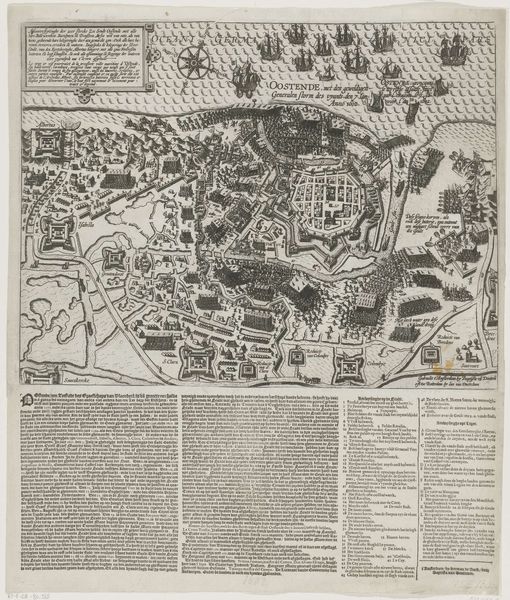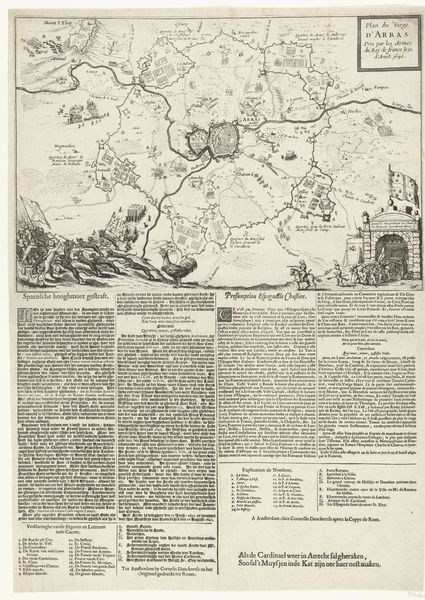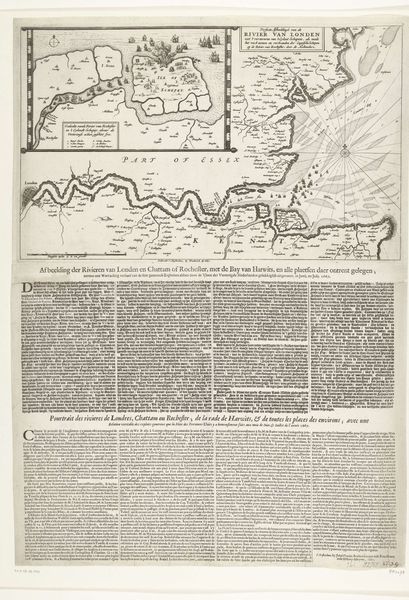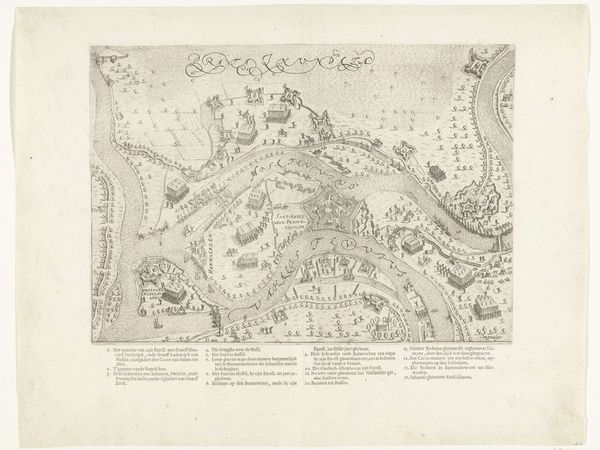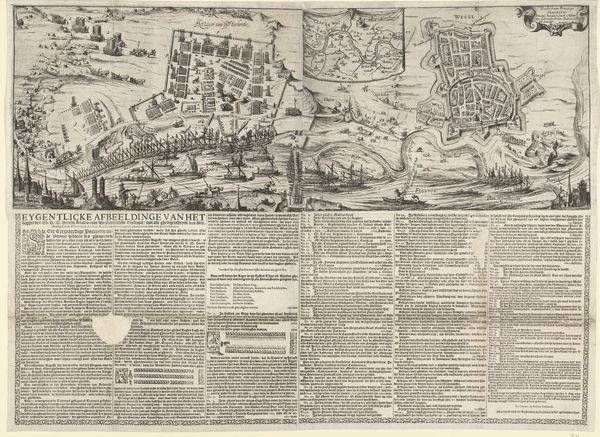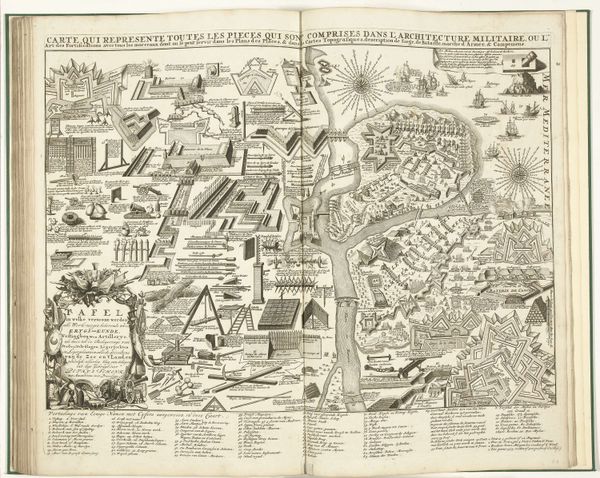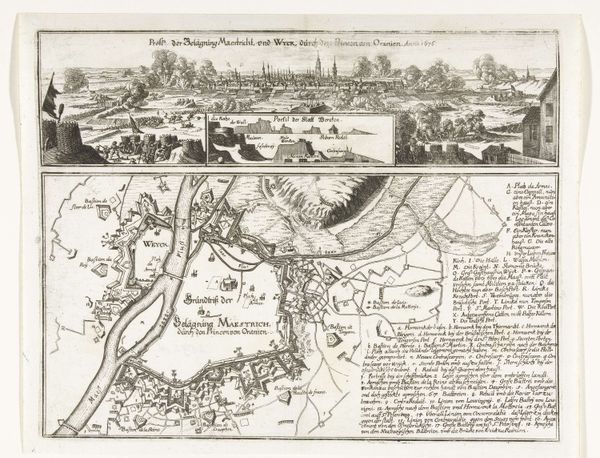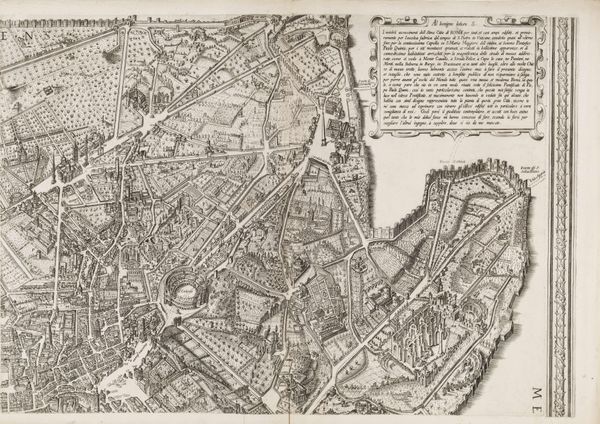
Belegering van Zaltbommel en andere sterkten in de Bommelerwaard, 1599 1599
0:00
0:00
print, engraving
# print
#
old engraving style
#
hand drawn type
#
hand drawn
#
pen-ink sketch
#
pen work
#
cityscape
#
history-painting
#
northern-renaissance
#
engraving
Dimensions: height 405 mm, width 703 mm
Copyright: Rijks Museum: Open Domain
This print, "The Siege of Zaltbommel and other Fortresses in the Bommelerwaard," was made in 1599 by an anonymous artist using engraving, a technique known for its precision. The image is more than just a representation; it's a product of skilled labor, and the result of a meticulous process. To create this print, the artist would have used a tool called a burin to carefully incise lines into a metal plate, likely copper. The plate is then inked, and the surface wiped clean, leaving ink only in the engraved lines. Finally, paper is pressed against the plate to transfer the image. The dense network of lines shows the effort involved, and this attention to detail speaks to the importance of accurate information during a time of conflict. The act of engraving transforms a sheet of metal into a medium for communication, and the final print is a testament to both artistic skill and the value placed on disseminating information during times of war. It’s a powerful reminder that even seemingly simple materials can carry significant cultural and historical weight.
Comments
No comments
Be the first to comment and join the conversation on the ultimate creative platform.
